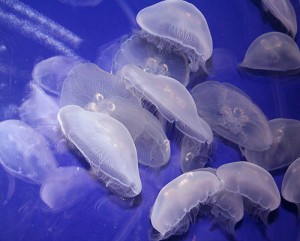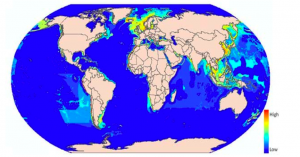 The Sea Around Us Project provides global marine fisheries landings spatially so we have an idea of which country caught what and where. We have to keep the data updated, which takes a team of skilled people led by Dr. Reg Watson. The new and improved version of the database is now available online and includes updated catch data to 2006, catch reconstructions for China (whose catch was adjusted downward after Watson & Pauly, 2001) and 12 other countries, updated fishing agreements, and improved spatial allocation of catch due to greater knowledge of species distributions. You can read more about the database updates in the forthcoming Sea Around Us newsletter.
The Sea Around Us Project provides global marine fisheries landings spatially so we have an idea of which country caught what and where. We have to keep the data updated, which takes a team of skilled people led by Dr. Reg Watson. The new and improved version of the database is now available online and includes updated catch data to 2006, catch reconstructions for China (whose catch was adjusted downward after Watson & Pauly, 2001) and 12 other countries, updated fishing agreements, and improved spatial allocation of catch due to greater knowledge of species distributions. You can read more about the database updates in the forthcoming Sea Around Us newsletter.
Category: New Research
New Studies Give Shape to Future Jellyfish Research
Jellyfish appear to be on the rise and Sea Around Us Project members Deng Palomares and Daniel Pauly have recently published two studies in the journal Hydrobiologia that help lay the foundation for future jellyfish research. The first paper, co-authored with several other colleagues, provides an overview on the general aspects and shortcomings of jellyfish coverage in the online databases available to ecosystem modelers (i.e. Fishbase, Sealifebase, and Ecopath with Ecosim). The second study looks at the growth of jellyfish and concludes that jellyfish grow at a similar rate to small fishes. Their broad predictions on jellyfish growth might also assist in determining how specific, unstudied species might grow.
MEY=MSY
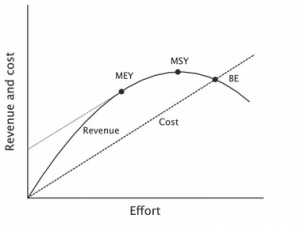 When one considers all the extra value generated in a fishery such as processing, distribution and marketing of fish products, higher fisheries quotas make more sense, according to a new paper titled MEY=MSY by Villy Christensen published in Fish and Fisheries. For more than 50 years, it has been generally accepted that the fishing sector stood to gain from managing fisheries at the effort level producing maximum economic yield (MEY) rather than maximum sustainable yield (MSY), which occurs at a higher effort level. “If operating at the lower MEY level would result in so much higher profit to the individual boats and to the fishing sector while maintaining catches nearly at MSY why don’t they?” asks Christensen in the paper. He explains that MEY was built on the assumption that only the revenue and cost structure for the fishing fleet were considered. Christensen points out that when processing, distribution and marketing of fish products are taken into account, there are more profits to be gained, which in turn makes MSY — and a higher fishing effort — the more appropriate target for fisheries. Read the full paper here.
When one considers all the extra value generated in a fishery such as processing, distribution and marketing of fish products, higher fisheries quotas make more sense, according to a new paper titled MEY=MSY by Villy Christensen published in Fish and Fisheries. For more than 50 years, it has been generally accepted that the fishing sector stood to gain from managing fisheries at the effort level producing maximum economic yield (MEY) rather than maximum sustainable yield (MSY), which occurs at a higher effort level. “If operating at the lower MEY level would result in so much higher profit to the individual boats and to the fishing sector while maintaining catches nearly at MSY why don’t they?” asks Christensen in the paper. He explains that MEY was built on the assumption that only the revenue and cost structure for the fishing fleet were considered. Christensen points out that when processing, distribution and marketing of fish products are taken into account, there are more profits to be gained, which in turn makes MSY — and a higher fishing effort — the more appropriate target for fisheries. Read the full paper here.
High Seas Fleet Kept Afloat with Subsidies
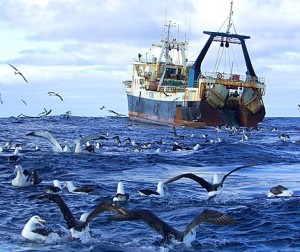 High seas bottom trawlers catch some of the tastiest fish (think Orange roughy, rockfish, and Patagonian toothfish), which are also some of the most vulnerable and overfished species because they grow and mature so slowly. A new study shows that this type of overfishing continues because the 200-strong trawling fleet is kept afloat with government money.
High seas bottom trawlers catch some of the tastiest fish (think Orange roughy, rockfish, and Patagonian toothfish), which are also some of the most vulnerable and overfished species because they grow and mature so slowly. A new study shows that this type of overfishing continues because the 200-strong trawling fleet is kept afloat with government money.
Several members of the Sea Around Us Project led by fisheries economist Rashid Sumaila estimated bottom trawl fleets operating in the high seas, i.e., outside of the Exclusive Economic Zones of maritime countries, receive an estimated US$152 million per year in fisheries subsides, which is 25% of the total landed value of the fish. The profit achieved by this vessel group is normally not more than 10% of landed value, which means that without subsidies, the bulk of the world’s bottom trawl fleet operating in the high seas will be operating at a loss, and unable to fish, thereby reducing the current threat to deep-sea and high seas fish stocks. The study is titled Subsidies to high seas bottom trawl fleets and the sustainability of deep-sea demersal fish stocks and was published online this month in the journal Marine Policy.
Colombian Fisheries Bigger Than Reported
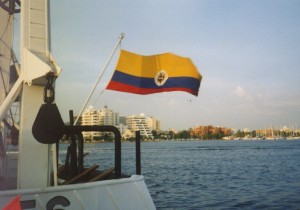 A new study published online in Marine Policy last week shows that Colombia, like many other countries around the world, has been underreporting its marine fisheries catches. From 1950–2006, the Colombian catch may have been almost twice the landings reported by FAO on behalf of the country (2.8 times higher in the Atlantic Ocean fisheries; 1.3 times higher in the Pacific Ocean fisheries). Jeffrey Wielgus, a former visiting researcher with the Sea Around Us Project, is lead author of the study and Sea Around Us members Dirk Zeller and Rashid Sumaila are co-authors. The fourth author, Dalila Caicedo-Herrera, is a Colombia-based fisheries researcher. The article is titled: Estimation of fisheries removals and primary economic impact of the small-scale and industrial marine fisheries in Colombia.
A new study published online in Marine Policy last week shows that Colombia, like many other countries around the world, has been underreporting its marine fisheries catches. From 1950–2006, the Colombian catch may have been almost twice the landings reported by FAO on behalf of the country (2.8 times higher in the Atlantic Ocean fisheries; 1.3 times higher in the Pacific Ocean fisheries). Jeffrey Wielgus, a former visiting researcher with the Sea Around Us Project, is lead author of the study and Sea Around Us members Dirk Zeller and Rashid Sumaila are co-authors. The fourth author, Dalila Caicedo-Herrera, is a Colombia-based fisheries researcher. The article is titled: Estimation of fisheries removals and primary economic impact of the small-scale and industrial marine fisheries in Colombia.
Consumer Campaigns, Pig Feed, and Conservation
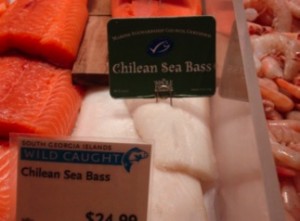 An article titled Conserving wild fish in a sea of market-based efforts appeared last week in Oryx: The International Journal of Conservation authored by Jennifer Jacquet, Daniel Pauly, Rashid Sumaila, and Sherman Lai of the Sea Around Us Project, along with five additional colleagues. Its publication led to an article in the Vancouver Sun on how domestic farm animals are devouring the world’s fish stocks and an AFP piece explaining that consumer campaigns don’t save endangered fish. The article addresses the effects of consumer campaigns in an increasingly globalized market for seafood.
An article titled Conserving wild fish in a sea of market-based efforts appeared last week in Oryx: The International Journal of Conservation authored by Jennifer Jacquet, Daniel Pauly, Rashid Sumaila, and Sherman Lai of the Sea Around Us Project, along with five additional colleagues. Its publication led to an article in the Vancouver Sun on how domestic farm animals are devouring the world’s fish stocks and an AFP piece explaining that consumer campaigns don’t save endangered fish. The article addresses the effects of consumer campaigns in an increasingly globalized market for seafood.
Satellite Imagery Can Improve Ocean Data
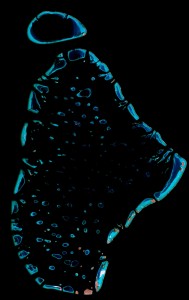 How much the oceans are protected? How much of the globe is covered in coral reefs? These are important questions that require decent data. A new study led by Sea Around Us Project member Colette Wabnitz and just released online by the journal Frontiers in Ecology and the Environment reveals that the current data available are too poor for them to be used to evaluate progress toward conservation targets, such as international goals to set aside 20-30% of the oceans as marine protected areas. Technological advances in satellite imagery, like this image of the North Male atoll in the Maldives, can help us better determine the true size of coral reefs, mangroves, seagrass, spawning grounds, and other vulnerable marine habitats. Read the full study here.
How much the oceans are protected? How much of the globe is covered in coral reefs? These are important questions that require decent data. A new study led by Sea Around Us Project member Colette Wabnitz and just released online by the journal Frontiers in Ecology and the Environment reveals that the current data available are too poor for them to be used to evaluate progress toward conservation targets, such as international goals to set aside 20-30% of the oceans as marine protected areas. Technological advances in satellite imagery, like this image of the North Male atoll in the Maldives, can help us better determine the true size of coral reefs, mangroves, seagrass, spawning grounds, and other vulnerable marine habitats. Read the full study here.
Climate Change Will Affect Ocean Food Supply
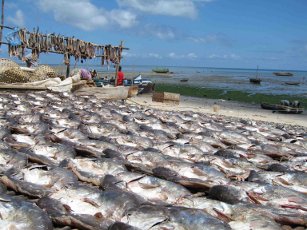 Major shifts in fisheries distribution due to climate change will affect food security in tropical regions most adversely, according to a new study led by the Sea Around Us Project’s William Cheung (now based at the University of East Anglia in the UK). The study, published today Global Change Biology, finds that climate change will produce major shifts in productivity of the world’s fisheries, affecting ocean food supply throughout the world, most particularly in the tropics. Read the full press release here and a summary of scientific findings and some of the major maps and graphs from the climate change study here . The Pew Environment Group also put out a report on the study in their Ocean Science Series.
Major shifts in fisheries distribution due to climate change will affect food security in tropical regions most adversely, according to a new study led by the Sea Around Us Project’s William Cheung (now based at the University of East Anglia in the UK). The study, published today Global Change Biology, finds that climate change will produce major shifts in productivity of the world’s fisheries, affecting ocean food supply throughout the world, most particularly in the tropics. Read the full press release here and a summary of scientific findings and some of the major maps and graphs from the climate change study here . The Pew Environment Group also put out a report on the study in their Ocean Science Series.
First Global Estimate of Fish Biomass
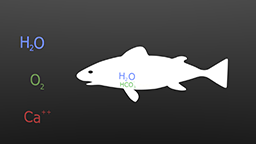 Sea Around Us Project member Villy Christensen is author on a paper that provides first-ever estimate of worldwide fish biomass and impact on climate change. Read the press release and the full study published in Science (here also is a link to the associated ‘perspective’ article). Below is a video animation of fish excreting pellets of calcium carbonate, a chalk-like substance also known as “gut rocks,” in a process completely separate from food digestion (animation by Dalai Felinto).
Sea Around Us Project member Villy Christensen is author on a paper that provides first-ever estimate of worldwide fish biomass and impact on climate change. Read the press release and the full study published in Science (here also is a link to the associated ‘perspective’ article). Below is a video animation of fish excreting pellets of calcium carbonate, a chalk-like substance also known as “gut rocks,” in a process completely separate from food digestion (animation by Dalai Felinto).


